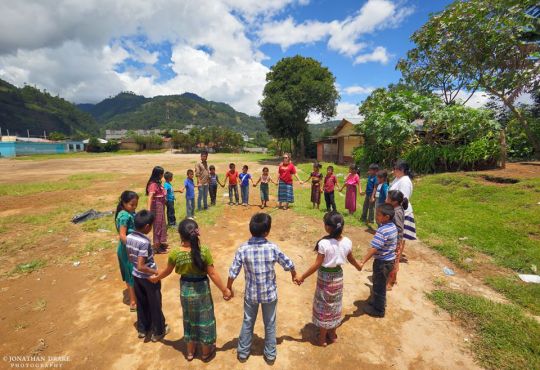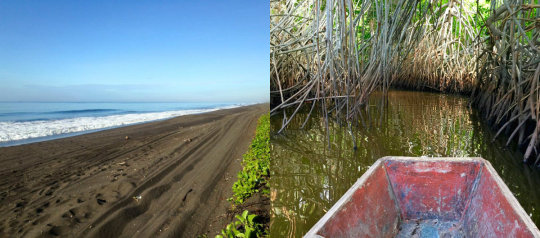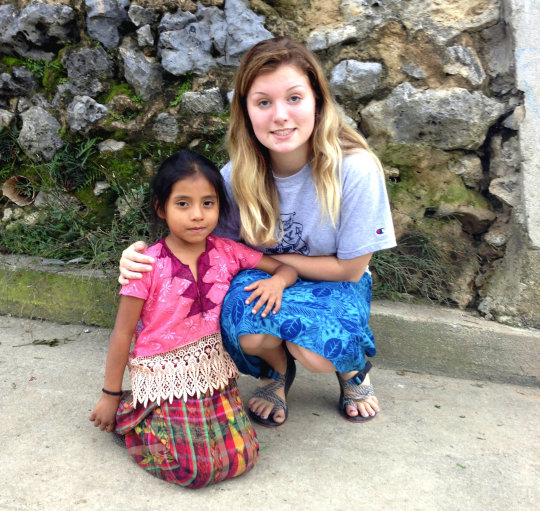18 Feb A Tale of Two Villages
Written by Charlotte McGlone, Chapel Hill, North Carolina
Visiting a new school with Teachers2Teachers – International is always an interesting
experience. There is a mixture of excitement and nervousness that makes these
trips unique. Excitement, because I know that I could be creating the
precursors for lifelong partnerships, watching my teammates implant nuggets of
knowledge that are needed for teachers to better engage their students, and
learning important lessons about myself and the world from the different people
that I will meet. Nervousness, because none of this is certain. There is a
relative amount of “flying by the seat of your pants” on these initial
excursions; no set model or plan guides our decisions. Our actions are dictated
by the intricacies of the culture we encounter and the dispositions of the
individuals we will work with. Sometimes we make mistakes, and sometimes we do
not understand each other. In those instances, it is on us to adapt. We are the
interlopers, bearing the responsibility to communicate accurately rather than
expecting our hosts to accommodate us.

Going to El Paredón, these thoughts were on my mind. As our van trundled down the sand “roads,” the mangrove forest thinned to unveil a town that was different from any I had been to before. The colorful houses were nestled in small yards where palm trees shaded townsfolk who happily talked and relaxed while waving on our vehicle. It seemed like a tightly knit, peaceful community, where the residents made their living by surfing, fishing, and welcoming the small but steady stream of tourists arriving from all over Guatemala and the world.
After settling into the Pelicano Hotel, our team had a meeting with our hosts from the nonprofit La Choza Chula. Manuela Cea-Poblete, their Director of Education, detailed the difficulties that they were facing as well as the goals that they hoped to meet. The public school in El Paredón has been losing teachers at an accelerated rate, as the municipality struggles to pay even a fraction of its workers. Large class sizes and a time deficit causes educators to be unable to reach all their students and reinforce their own knowledge base. Yet even in the midst of barriers, our team is excited to see
how the fruits of our labor can blossom into a real, rewarding partnership with El Paredón and La Choza Chula.


The Teachers2Teacher’s workshop the next morning at the public school in the
village reminded me of our first visit to the William Botnan School in Santa Avelina. The teachers were engaged and seemed to enjoy themselves, but they seemed slightly on guard, as if they were unwilling to make mistakes and ask questions. While we worked on group problem-solving, it seemed to me as though they were unfamiliar with and slightly unsure of the activity. I saw excitement and understanding spark, but I realized that it would take time to create an environment where the educators felt comfortable enough to truly grow. Our team felt the experience to be incredibly rewarding, and it spurred us to begin detailed plans on how to progress in this special community. At the end of the workshop, one teacher asked us, “How can I find or create interactive lessons
like this for my own students?” This was the sign we needed that our work would be accepted and absorbed in El Paredón!

Four days later, our team found itself in a very different place. A ten hour bus ride heading northeast, up into the mountains of Quiché, which the lastdescendants of the great Mayan empire called home, led us to our longtime partners in Santa Avelina. This would be my fifth time at the William Botnan School, so my excitement was all-consuming. On introductory visits like our trip to El Paredón, I looked forward to seeing new places and meeting different people; returning to Santa Avelina, I happily anticipated the faces of children and teachers I had spent four weeks with previously. As Teachers2Teachers has solidified its relationships and perfected its methods, our partners in the Botnan School have opened up to us in incredible ways. Our workshops have become more like collaborative problem-solving episodes, and I believe we learn from the locals as they do from us. The avenues of learning between our two groups have opened into channels of interconnectivity that I have not seen replicated anywhere else.
While our small bus worked its way through the winding, downhill pathways of the small village, I picked out smiles that I recognized. Children ran beside our vehicle and one young boy even jumped on the back to ride with us to the school. After we parked, I was the first one to step outside. Immediately, I was enfolded into an embrace by Phillipa, the school librarian who would later bring her newborn baby to meet our team. Laughing out loud, I was shuttled from person to person. I saw my dad share a back-slapping hug with Domingo, a 6th grade teacher, in the typical bro-fashion. We shared words of remembrance as the bus was slowly unloaded.
That night, our group introduced the new Teachers2Teachers members to the Santa Avelina educators. I noticed that jokes lightened the mood, and nobody seemed hesitant to intermingle. This camaraderie was an exciting development, a change from our first couple of trips to the highlands.

There are too many moments worth sharing from the week that followed, but if one encapsulates the visit, it would be Board Member Dr. Francisco Alarcón’s lesson. He and my dad worked with a small group that consisted of the fourth-, fifth-, sixth-grade, and physical education teachers. Francisco had prepared some problems that allowed us to work with Mayan numbers, a base-twenty system that relies on rows of dots and bars. The Santa Avelina teachers, intent on getting the answers, put their heads together and switched seamlessly from conversing in Spanish to Ixil, the ancestral tongue of the region. The gravity of the moment struck us: Mayan descendants, speaking a Mayan language, solving Mayan math equations. We were witnesses to culturally relevant learning at its peak, and we all knew that what we were learning expanded far beyond numbers. As I struggled with my own math problem, Domingo leaned over and helped me work on the solution. When I finally reached my ah-ha moment, he seemed as pleased as if I were one of his own students.

Walking around Santa Avelina during free time, I ran into many of my students from previous years. They all greeted me with smiles and hugs, catching me up on events of the four months since my last visit: Teresa’s parents purchased a sewing store, Miguel had a baby sister, Ofni celebrated his birthday. My heart was so full, interacting with them. For me, the children are what make the trips worthwhile. I enjoy assisting in the classrooms because I know it is easier for the students to succeed when their teachers are employing exciting and interactive techniques. I hope that by encouraging them to stay in school and chose career paths, I am helping build a generation of creative achievers in Santa Avelina.

Seeing two different sides of what we do during my latest trip to Guatemala gave me an incredible glimpse into what Teachers2Teachers is all about. Whether we are visiting places we have never been before, or spending time in a longstanding partner school, our goal is to build connections. Connections between subject matter, lessons, individuals, communities, and countries. I see the results of our hard work in Santa Avelina, and I see the knowledge that has been shared with us by the locals influencing how we move forward across our areas of reach. I am sure that one day, El Paredón will be a success story just like Santa Avelina, as will every connection we are able to make in the future.
No Comments